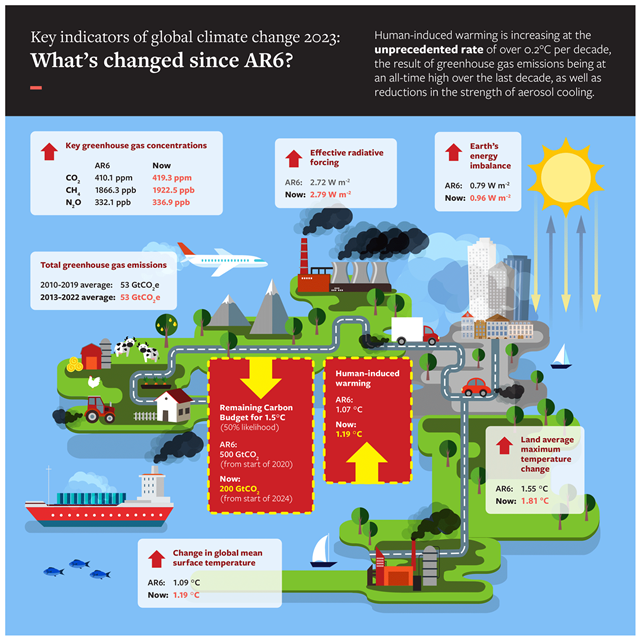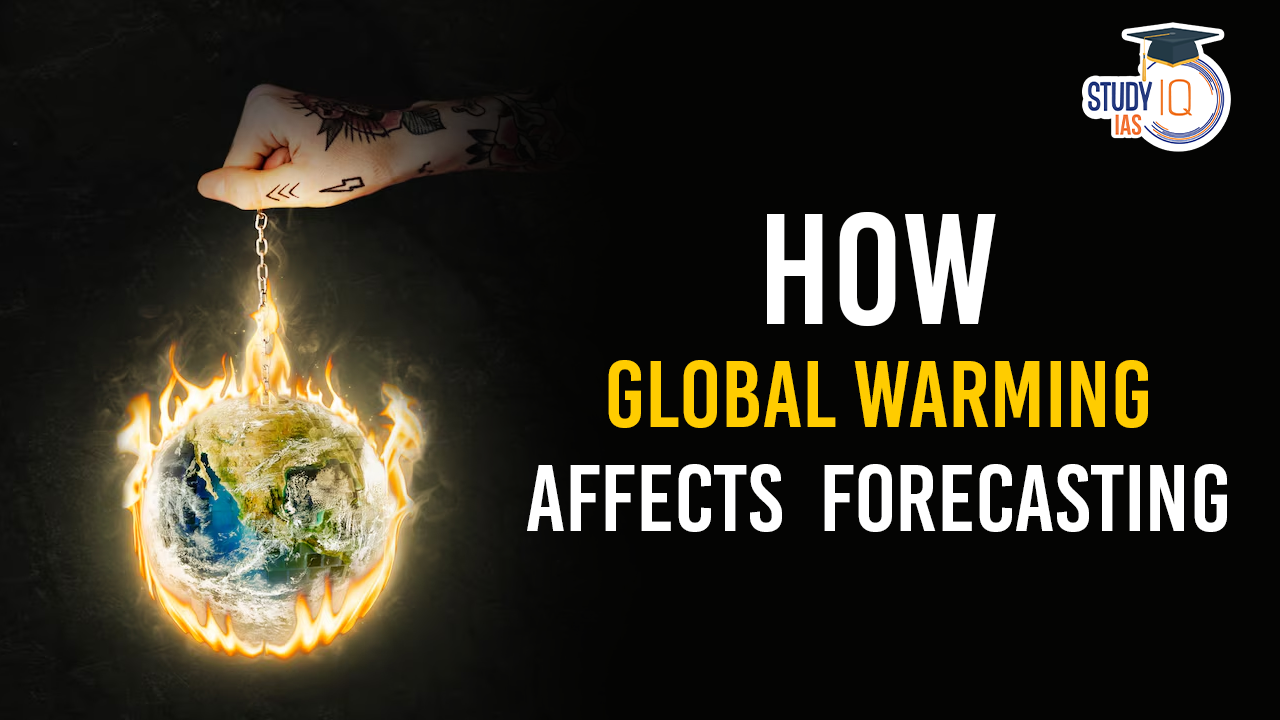Table of Contents
Context: The record warming observed during 2023-2024 has provided clearer insights into the impacts of global warming, characterised by a range of extreme weather events. These include heatwaves, cyclones, floods, droughts, wildfires.
More in News
- Estimates suggest that the world has surpassed the 1.5°C warming threshold compared to pre-industrial averages.
- However, this figure is based on a combination of data and climate models, and it remains unclear how long temperatures must stay above this threshold for significant environmental impacts to occur.
IPCC Assessment Report 6 (AR6)

Climate Predictions and Observations
- Meteorologists had predicted the occurrence of El Niño in spring 2023, but the level of warming experienced was unexpectedly high.
- Contributing factors include:
- Water vapour released from the Hunga Tonga–Hunga Ha‘apai underwater volcano eruption in 2022.
- Increased CO2 emissions from wildfires.
- The 2023 monsoon was below average but not an El Niño drought.
- Predictions for a strong La Niña in late 2024 now seem unlikely, demonstrating the unpredictability of weather patterns.
- Cyclone activity in the North Indian Ocean was weaker than expected, and the anticipated Indian Ocean Dipole (IOD) did not materialise as predicted.
| Quote |
| “Prediction is difficult, especially if it’s about the future.” – Neil Bohr |
Predictive Limitations
- Complex Predictive Models: Current models can reproduce climate patterns based on solar energy but often disagree on specific outcomes.
- Existing models struggle to accurately reproduce historical monsoon trends and are often unreliable for future forecasts.
- Natural Variability vs. Climate Trends: There is uncertainty regarding whether current patterns are genuine trends or merely decade-to-decade variability.
- Warming may alter the timescales of these variabilities, complicating predictive accuracy.
Lessons from Recent Extremes
- Projections and Uncertainties: Climate projections hinge on emissions scenarios, population growth, and mitigation policies.
- Uncertainties in these models, combined with natural variabilities, limit long-term predictability.
- Decadal Focus: Projections beyond a few decades are speculative due to the complex interplay of geopolitical, economic, and societal changes.
- Thus, focusing on near-term projections (10-20 years) might yield more reliable results.
Strategy for Future Predictions
- Technological Improvements: Advancements in AI, machine learning, and enhanced data networks offer potential to improve model reliability and develop better early warning systems at localised scales.
- Balancing Resources: Policymakers must weigh the costs and benefits of investing in long-term climate projections, considering the vast resources required to model scenarios extending to 2100.


 Solar Photovoltaic (PV) Cells, Types, Ke...
Solar Photovoltaic (PV) Cells, Types, Ke...
 Supreme Court Bars Ex-post facto Environ...
Supreme Court Bars Ex-post facto Environ...





















